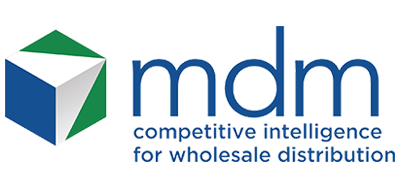Despite inflation and geopolitical uncertainty, purchasing and supply executives say the U.S. economy will continue to softly expand for the rest of 2023, according to the Institute for Supply Management’s Spring Economic Forecast.
Revenue for 2023 is expected to increase, on average, by 1.7%. This is 3.8 percentage points lower than ISM’s December 2022 forecast of 5.5%, and 7.6 percentage points lower than the 9.3% year-over-year increase reported for 2022.
With an operating rate of 82% of normal capacity and projected increases in capital expenditures (.4%), prices paid for raw materials (2.3%) and employment (.5%) by the end of 2023, manufacturing continues its comeback from the “turmoil that began in 2020 and is expected to continue through this year,” ISM reported.
Ten of 18 industries report projected revenue increases for the rest of 2023, listed in order:
- primary metals,
- printing and related support activities,
- apparel, leather and allied products,
- electrical equipment, appliances and components,
- food, beverage and tobacco products,
- transportation equipment,
- machinery,
- textile mills,
- miscellaneous manufacturing; and,
- petroleum and coal products
“With 10 manufacturing sector industries expecting revenue growth in 2023 and 11 industries expecting employment growth in 2023, panelists forecast that recovery will continue the rest of the year, albeit somewhat softer than originally expected,” Timothy Fiore, Chair of the ISM Manufacturing Business Survey Committee, said in the report summary.
Employment to Increase Slightly by Year’s End
ISM’s Manufacturing Business Survey Committee respondents forecast that sector employment in 2023 will increase 0.5 percentage between the end of 2022 and the end of 2023.
The 11 industries that project employment growth during 2023 — listed in order — are:
- printing and related support activities,
- primary metals.
- fabricated metal products,
- chemical products,
- petroleum and coal products,
- electrical equipment, appliances & components,
- plastics and rubber products; machinery,
- paper products; nonmetallic mineral products; and,
- transportation equipment
Most Industries Operating Above Normal Capacity
Eleven industries reported capacity levels above the average rate of 82%. That average is 6.4 percentage points lower than the figure reported in December 2022.
The 11 industries are:
- petroleum and coal products,
- paper products,
- apparel, leather and allied products,
- wood products,
- machinery,
- computer and electronic products,
- primary metals,
- chemical products,
- transportation equipment,
- miscellaneous manufacturing; and,
- electrical equipment, appliances and components
Production Capacity to Increase Slightly
While 60% of the purchasing and supply executives surveyed by ISM expect no change in capacity increases, manufacturing product capacity is expected to increase .4 percentage points in 2023.
Of the 10 industries expecting production capacity increases for 2023, the top five are:
- apparel, leather and allied products
- fabricated metal products
- miscellaneous manufacturing
- food, beverage and tobacco products
- transportation equipment; machinery
Capital Expenditures Forecast Weakens
Survey respondents expect a .4 percentage point increase in capital expenditures in 2023, lower than the 2.6% increase forecast by the panel in December.
The eight industries expecting capital expenditure increases for 2023 — listed in order — are:
- printing and related support activities,
- apparel, leather and allied products,
- petroleum and coal products,
- nonmetallic mineral products,
- paper products,
- food, beverage and tobacco products,
- electrical equipment, appliances and components; and,
- computer & electronic products.
Average 2023 Prices to Increase 1% Overall
Survey respondents expect a year-over-year, net-average prices increase of 1% for 2023.
With respondents reporting price increases of 2.3% through April 2023, prices are projected to ease slightly over the rest of the year.
Forty percent of respondents project prices to increase, on average, 7.5% for the full year, 24% anticipate a decrease (8.2%, on average), and 36% expect no change.
Of the 10 industries that expect price increases for all of 2023, the top five are:
- apparel, leather and allied products
- transportation equipment
- printing and related support activities
- computer and electronic products
- nonmetallic mineral products
To view the complete report, including full lists and charts, visit ISM.
On May 1, ISM released its monthly Purchasing Managers Index (PMI) — a well-regarded barometer of the U.S. industrial economy. The PMI rose slightly in April but remained in contraction.
